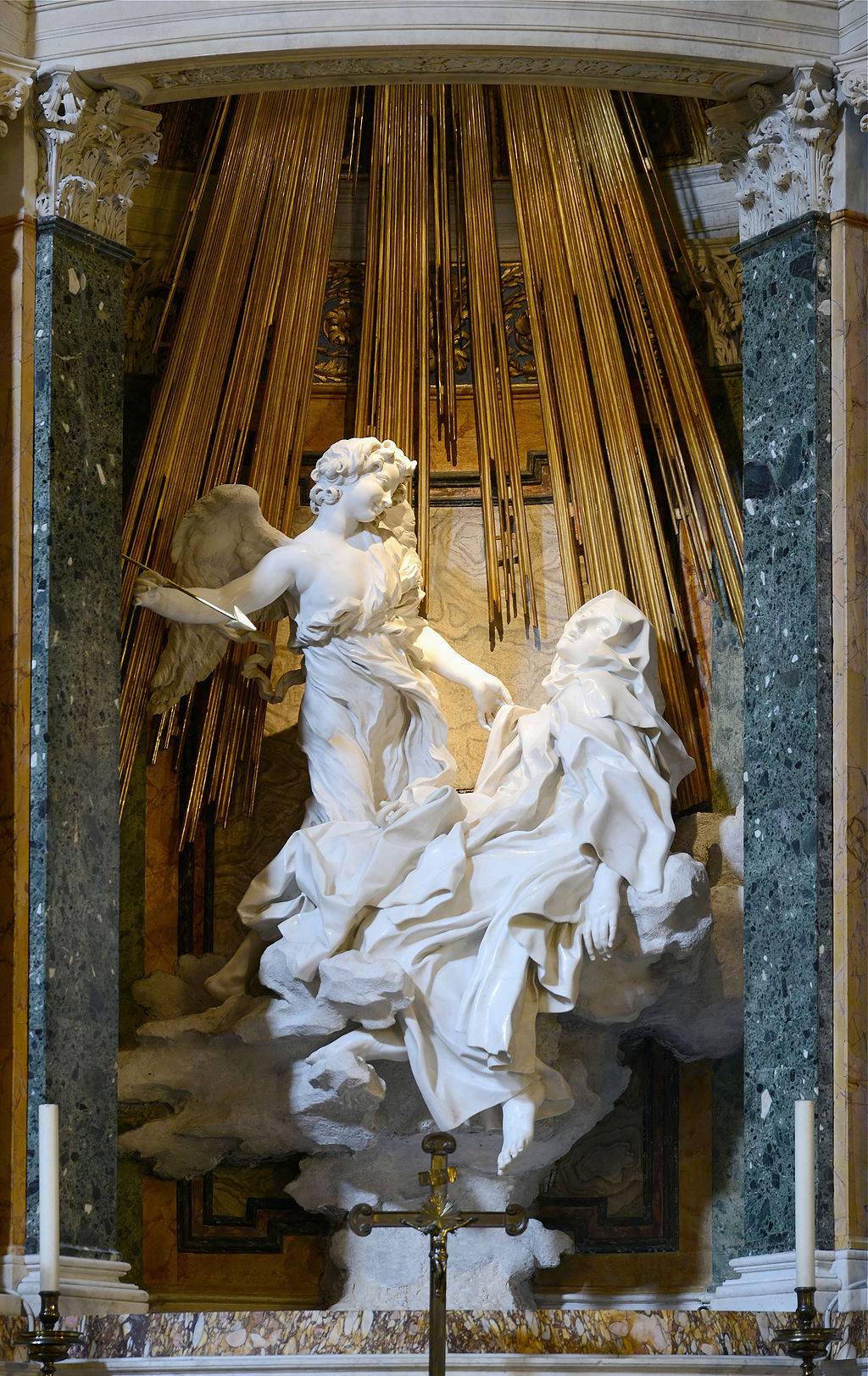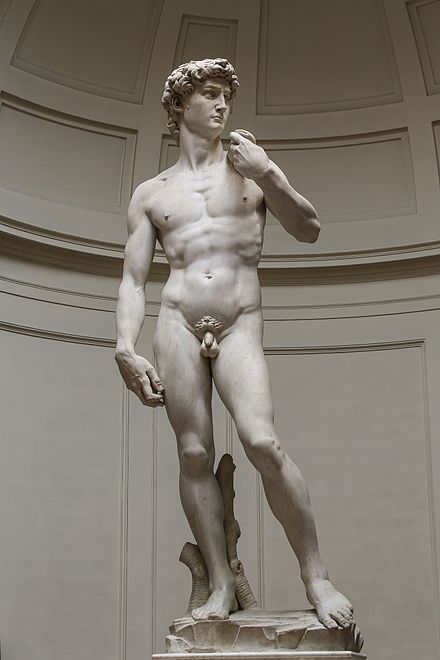“In his hand, I saw a long spear made of gold, and its tip, there appeared a small flame. It seemed as if he were occasionally thrusting it into my heart, piercing through my very core. When he pulled it out, it felt like he was drawing out my insides as well, leaving me ablaze with a fierce love for God. The pain was incredibly intense, making me groan; however, the sweetness of this overwhelming pain was so extraordinary that I could not desire to be free from it.” St. Terese of Avila, The Interior Castle ☦☦☦ HENCE THE SEXUAL/MYSTICAL/SENSUAL SUBJECT OF THIS MASTERPIECE!
There is no piece of sculpture that transfigures the act of humanity into divinity in more detail and glamor than this piece by Bernini. Carved from enigmatic methods of marble, Bernini isolated the arcane and demonstrated the miracle in such a wraith form that one can observe this composure as if you are the eyewitness; it is an eternal act that stages the miracle of divinity, while preserving the matrix of humanity. This is the mature Bernini. This is the determined Bernini. This is the Bernini that will bequeath to Italian marble what Shakespeare donated to English semantics. Bernini’s obsession with perfection and sacrosanctity reaches the vertical limit of artistic creation. It is a didactic paradigm of divinity and spiritual expression of the highest caliber.

Saint Teresa has just been exonerated of her humanity; she now sleeps on a cloud of perfection and bliss, accompanied by an angel that guides her into eternal purpose of instruction; however, there is more humanity in the depiction that has been suggested. Passion is placed in the center of the halo of intensity. Physical pleasure is more human through marble than any painting or poetry ever composed. Bernini is determined to gratify human emotion and perception through the look of Teresa’s not just by any means. His selection of her demeanor is carefully articulated through the greedy panting of her lips; her cheeks are swollen with mischief and sensualism. There is no doubt to cast on her enjoyment; it is sexual and exciting to behold. Reality, in this interlude, is conjured by the enlightened experience of Teresa’s acceptance of her blissful fate. There is determined complexion and legislative serenity in the marble; it melts into the eyes of the viewer and is suggestive of illuminating and mystical virtue with each new gaze. Her eyes are punctured with both concern and harmony as she struggles to undertake her exquisite plight. The resplendent and fashionable angel reassures her that what is occurring is not fantasy or chance; the entire reality has been cured from its inception; the truncated veil between mystery and indecency and foreplay is trinitized. Teresa is levitating in pleasure; her feelings of sensationalism and gratification are matured by the waves of her pulsating feet and cushioned hands against her drapery. This is the most obvious indication of her experiences.
Her whispering attire is itself in a rage of passion and intrigue; it is veiled by tameless engravings and rebellious containment. There is a cascade of enigmas and intrigue underneath her foaming fashion that is left to the imagination. Teresa is in a wave of grace and satisfaction that refuses to entertain divinity. Her volcanic egesta is translucent by her indulging posture. Bernini is committing the viewer to look sharply at what is being demonstrated; he even has spectators just for this event itself. There is even a fabricated light show to dazzle the senses into thinking the act itself is under permission by divine authority. Bernini spares no expense of pleasure or suggests that there will be consequences. As the act climaxes into majestical rapture, The Dead are even invited to participate in her taunting mischief. A circle below the sculpture is encrusted with a skeleton that is suggesting taking part in this mischievous ritual; the earth and the ground are granted permission to take part in the celebration of epicurean preponderance.
With this sculpture, Bernini has eternalized the climax. Eroticism and virginity are family. Innocence and chastity are exploratory chasms of fortitude and merit. The results will vary; the human figure, in all of its pretentious and natural glory, will forever be sustained by the nectar of desire. The elegant mystery of sainthood and tribulation is carefully interwoven with purpose and chaos. From here on, the human form is the plethora of superlative virtue of the cosmos.
© 2025, Mark Grago. All rights reserved.





